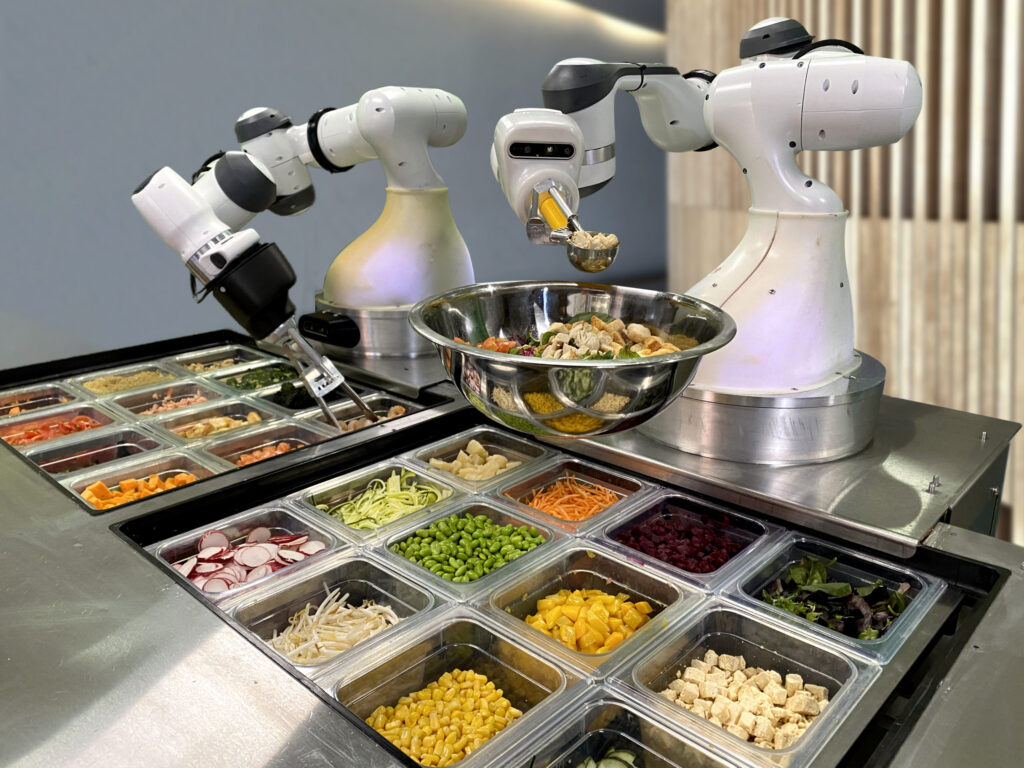Food robotics implies to the machineries utilized in the food & beverage sector to perform intricate manufacturing processes, like feed placement, dispensing, pick-and-placing items into containers, packaging & casing, labeling packages, and sorting raw material. They assist in carrying out tedious and monotonous production operations at high speed in extreme situations such as high temperatures. In addition, food robots lower production costs, save time & space, and enhances safety, efficiency, and cleanliness, of manufacturing processes. Consequently, major companies within the food and beverage sector across the globe are systematizing the food production processes by means of food robotics technology to produce products in mass quantity and with high accuracy.
The global food robotics market is anticipated to grow exponentially during the forecast period owing to elevated automation need, rising packaged food demand, growing food safety guidelines, and escalated labor costs. The requirement for efficiency and productivity in the food processing activities like packaging, grading, and palletizing to comply with food safety criteria is also likely to spur market growth. Additionally, the rising focus on improving practical efficacy in production will also boost adoption of food robots. Furthermore, with the incorporation of artificial intelligence (AI) and big data, several improvements are made in robotic technology that facilitate gentle, quick conduct of delicate food products such as frozen pizzas, biscuits, and vegetables & fruits. Also, the snowballing expenditure in automation within the food market is expected to present numerous growth avenues for the global market.
Global food robotics market can be bifurcated based on application, type, end-use, payload and region. The market, by type, is divided into cartesian, collaborative, articulates, SCARA, cylindrical, parallel, and others. the market, by payload, is classified into heavy, medium, and low. The market, by application, is categorized into packaging, palletizing, pick & place, repackaging, and processing. The market, by end-use, is segregated into meat, beverages, seafood, poultry, bakery, dairy, confectionery, fruits & vegetables, and others.
Regionally, during the forecast period, the global food robotics market is anticipated to be led by Asia Pacific region owing to flourishing food & beverage sector, rising demand by people for packaged foods along with the decrease in the labor and operating costs. Likewise, North America is also projected to witness substantial growth during forecast period. This regional expansion can be credited to the rising number of major manufactures and well-established infrastructure.
The major players in the global food robotics market consist of ABB Group, Mitsubishi Electric Corporation, Kawasaki Heavy Industries Ltd., Rockwell Automation Incorporated, Fanuc Corporation, Kuka AG, Seiko Epson Corporation, Yaskawa Electric Corporation, Universal Robotics A/S, and Staubli International AG, among others.
Recent development: To cite, introduction of SoftAI Solutions was declared by Soft Robotics Inc. which includes patented 3D vision, industry-proven soft grasping and artificial intelligence software, to deal with the most demanding issue troubling the food industry – the incapability to implicitly automate operations.
